How to choose and make do-it-yourself ammunition for a horse
In those days, when a person was just starting to tame a horse, he managed with one bridle. Gradually, the horse became an integral part of human life, and more elements of equipment were already needed for comfortable interaction. Over time, equestrian sport appeared, which also made adjustments to the ammunition kit for the animal. Now the set of elements is unchanged, and it can be purchased in special stores or made independently - this will be discussed in the article.
What is ammunition for a horse and why is it needed?
Horse harness, or harness, horse harness is a set of objects and accessories with which you can harness, saddle a horse, and also manage it.

Each horse has its own disposition, therefore, for taming it, the bridle was not always enough. In addition, horseback riding is a sport in which it is easy to get injured, therefore, for the safety of the rider, as well as the animal, ammunition is needed.
What horse harness consists of
All accessories of a horse harness can be divided into three groups: protective, for control and for the safety of the rider in the saddle.
Main elements
The main controls of the horse are a bit and a bridle. The first are a metal rod, consisting of two movably connected parts, at the ends of which there are rings for fastening the bridle. The bits are needed to affect the toothless edge of the animal's mouth to facilitate its management. The bridle, or bridle, supports the bit, and also “transmits” a signal sent by the rider through the reins and requiring to perform a certain action. Did you know? The first semblance of a saddle was used by the Assyrian cavalrymen in 700 BC. e. Other elements of horse harness include the following names:
- halter - the same bridle, but without fishing rods, which is used to keep the animal on a leash;

- reins - a leather belt fastened to the fishing rings and is the main device for controlling a horse by a rider;

- martingale - a short belt fastened between the front limbs of the animal and connecting the front cinch and occasion in the fishing area; Helps to keep the animal's head in a certain position;
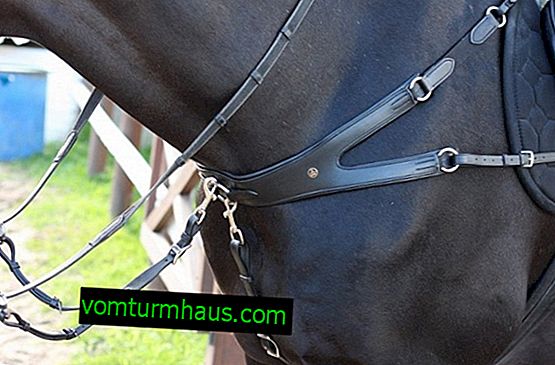
- chambon - a belt attached to a snaffle bridle and extending along the cheek straps down between the front limbs of the animal to the nearest cinch; allows you to control the tilt of the animal's head

- a saddle - there are a huge number of species, but all of them are designed to protect the back of the animal, more precisely, the uniform distribution of the load;
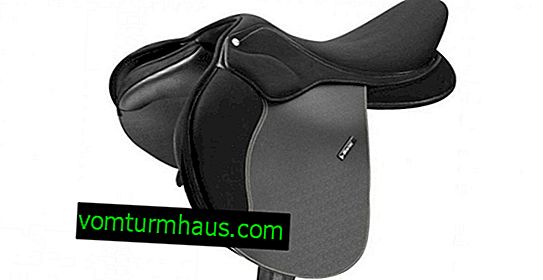
- stirrups - are a metal ring and a fastening belt for fixing on the saddle, help the rider to jump onto the horse and stay in the saddle;
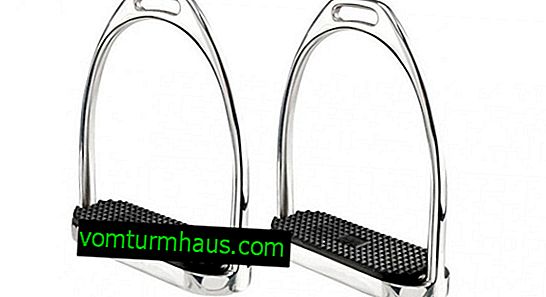
- whip - a flexible rod with a handle that helps to control the horse during training;
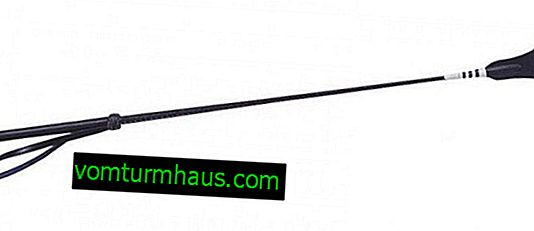
- scourge, or whip - a percussion device, consisting of a long handle and a woven belt with a knot at the end, may be about 200 cm long, designed to train a horse in the arena;
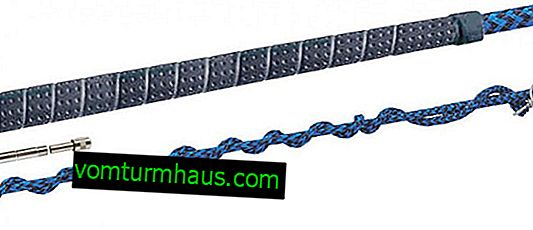
- spurs - a metal handle with a wheel or a burdock, mounted on the back of a shoe for riding and helping to control a horse.

Protective equipment
Elements of protective equipment are:
- blanket - a cape that covers the body of the horse, protecting it from the weather and insects;

- bandages - a cotton product designed to protect the lower part of the animal's limbs from injuries during exercises or active work;
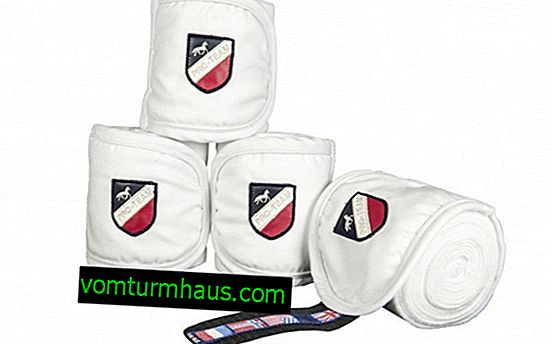
- nails - a leather device to protect the horse’s metacarpus from injury, attached over bandages;
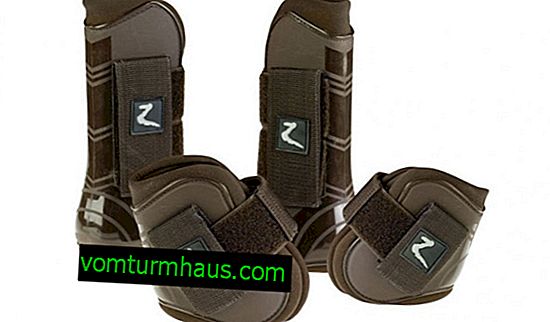
- rubber holsters - a cone-shaped device that protects the rim of the hooves from cracks and abrasions during the race;
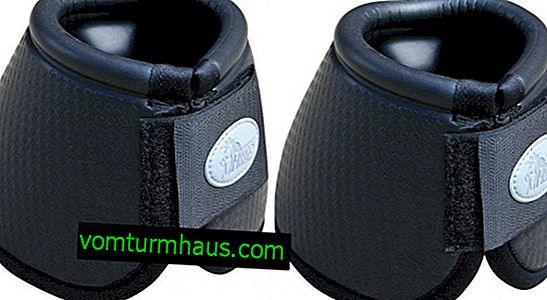
- Valtrap or sweatshirt - a cotton, cloth, felt blanket placed under the saddle to protect the back from rubbing and to absorb sweat.

How to choose high-quality ammunition for a horse
The harness is constantly in contact with the skin of the animal, so it is very important that it creates a minimum of discomfort for it. Usually it is made of leather (bovine or calf), which allows it to be strong and elastic.
Let's start the choice of ammunition with a bridle. For trotters, and other breeds, it is most often made from rawhide, which allows it to stretch well, but not tear. Bridles have a range of sizes. By design, they are “inflated” (an additional strip of leather or an elastic band sewn in a leather of a different color to make it beautiful) and “round” (made of double stitched leather) are sewn on the forehead and on the shoulder strap. At this point, you do not need to pay special attention, it is rather decorative in nature. The main thing is that the skin was of high quality, had a “brand” of the manufacturer, a label, even seams, and all the elements were sewn evenly.

The same must be taken into account when choosing other components of the harness, such as a reason and a cinch. Choosing a reason, you need to remember that they come from leather, rubber and braid. The former are durable only if the top is not glossy, while the latter is difficult to choose high-quality, since under the rubber top there is often no solid leather insert. If you are lucky to choose the original, they will be very convenient. Braid, especially imported, are easy to care for and last longer than the two previous options.
Important! Each rider selects the width of the occasion for themselves, but it is not advisable to take it wider than 2 cm, since it is not convenient to hold them, and the strength of the material is sufficient so that the narrower strip of the occasion does not break.
Girths can be made of natural and artificial leather, synthetic materials: the main thing is that this element of ammunition should be durable, but at the same time elastic. This is necessary so that he fixes the saddle well on the horse’s back and at the same time does not prevent the horse’s sides from rising and falling while breathing.
The type of saddle depends on what goals you set for yourself. Universal or multifunctional is better not to take, as each type of ride should have its own saddle. For example, if you plan a long ride on horseback, then the western saddle (cowboy), which has additional softening inserts, is best suited. In the English saddle, a horse can stay no longer than 2-3 hours. Also, the saddle must be individual for each horse, since the structure of the back in animals varies.

When choosing tensels and stirrups, give preference to metal, as this is a more durable material compared to plastic and rubber. Stirrups are selected individually for each rider. Choose the width of the stirrup 20–25 mm larger than the width of your shoes, since the foot should freely enter and exit the loop. It is good if the stirrups have a rubber insert that will not allow the foot to slip.
How to do it yourself
Ammunition can be purchased in specialized stores or made yourself. We will give some tips on making the most necessary elements of horse equipment.
Potnik
To sew a wrap-around, you must first take measurements so that you can make a pattern. If possible, it is most convenient to outline a ready-made, purchased potnik. Otherwise, please note that the product must be larger than the size of the saddle. The standard size of the slope is considered to be 70 × 90 cm.
Important! When performing the pattern, you need to take into account that the inner layer should be less than the rest by 10 mm around the entire perimeter, and the top one should be 10 mm smaller than the bottom along the central seam (the thinnest place). Having taken the measurement and made a pattern, leaving 20 mm along the edge for the seam, you can begin to search for fabric. The product itself can be made from old sheets, duvet covers, the main thing is that they be cotton or similar material, as well as durable. As a filler, you can use foam rubber, a terry towel, a flannelette blanket. Having picked up the material, it should be thoroughly washed and smoothed so that there is not a single fold.
Sweep all parts of the pattern and try on. Iron the product in addition and sew it on the typewriter. Hide edge seams.

Bridle
For sewing a bridle, it is very important to correctly measure:
- from one corner of the mouth to the other through the cheeks and behind the ear - add 10 cm for loops, for adjustment along the length of 7-10 cm for buckles;
- forehead distance between cheek straps, plus 10 cm extra for loops;
- between the same points only down, through ganache and plus 10 cm for the buckle (for the chin strap).

Blanket
It can be sewn from cotton fabric. The size depends on the dimensions of the body of the animal. The standard dimensions are 2 × 2.4 m. In addition to the fabric, you will need 3 carbines, 3 ringlets, 150 cm wide elastic, about 10 m of braid with a minimum width of 20 mm.
It will be useful for you to learn how to make a blanket for a horse with your own hands.
You can use a solid rectangle of the desired size, or stitch it from two smaller ones. The resulting canvas is folded in half, and a neckline is cut 0.6 m long and 0.2 m high. All corners of the blankets are rounded off. The edge is processed with a slanting tape. From the edge of the neck at a distance of about 1.4 m, a strip is sewn perpendicular to the back line, where the elastic will be threaded. Both edges should be open. The length of the strip is 0.3 m. An elastic band of 0.4-0.45 m is stretched into it, which is sewn into a ring. This is necessary to fix the blankets on the tail.
In the girth area, to the lower edge of the blankets, on one side, a double elastic band 0.4 m long with a carbine is sewn, and on the opposite end of the product is a ring for the carbine. At the front edges of the blankets are also sewn on carbines with elastic and rings for fastening the product on the neck.

Saddle
This element of equestrian ammunition is extremely difficult to do on your own. The task can be simplified by the presence of a lenochka (frame) from the old saddle. If there is no such element, then the creation of the saddle will have to start with its manufacture. It is made of wood, glued plywood or fiberglass. We advise you to learn more about the varieties of saddles for a horse, as well as how to make a saddle with your own hands. First you need to execute its layout. He will need cardboard and 1.3 m of wire. With the help of a wire, measurements are taken: it is applied to the back of the animal behind the shoulder blades, where the front raised part of the saddle is located. The wire should repeat the contour of the withers. Without straightening the wire, it is applied to the cardboard and outlines. The layout is cut out and applied to the back of the animal. If he clearly repeats its contours, then the work continues, otherwise the described actions are repeated again.
Measurements in progress:
- in the highest part of the withers;
- at the location of the front curved edge of the saddle;
- end of the withers (low back);
- end of saddle (at the level of the 18th spine);
- bending of the back from the withers to the 18th thoracic spine.

Using a chisel and a planer, we create a copy of the layout from a piece of wood. We attach the bend using a jigsaw and sandpaper. When the lenok is ready, you can begin to perform interior upholstery. To do this, foam rubber (polyurethane foam) is used: it is cut out in shape, if necessary, from several layers. You can take plywood as the base of the saddle - it is nailed to a lenok and foam rubber is attached to it with nails so that they go into the lenok. For the upholstery, leather is most often used, less often - burlap. The selected material is sheathed lenochka. It is better to buy ready-made ones.

Ammunition for the rider
Outfit for riders is of several options: amateur, classic, sports. Did you know? In the 18th century, fox hunting became popular in Britain. During the chase of prey, it was not convenient to keep in the old saddle, intended for heavy knights, so the British took up the lightness of this element of equipment and were able to create a copy weighing 500 g. So there was a classic English saddle. For amateur riding, you can put on:
- jeans;
- a shirt;
- vest;
- comfortable shoes without fasteners and other decorations, with a small square heel;
- hard hat.

- breeches (leggings);
- riding boots or boots and hags;
- shirt with a hunting tie;
- jacket-redington;
- helmet;
- gloves
- whip.

Sports equipment:
- breeches;
- shirt;
- tie;
- gloves (white);
- helmet (black);
- boots (black);
- jacket-redington (red, blue, black, green), at dressage is replaced by tailcoat.
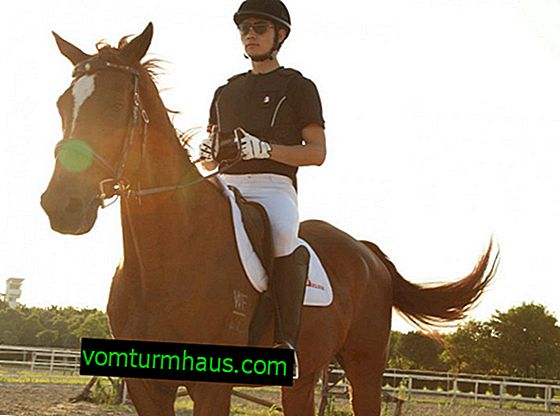
Ammunition for a horse is very important both for herself and for a person. The health of the animal, as well as the safety of it and its rider, will depend on the correctness of its selection. Accordingly, although some of its elements can be made independently, it is better to purchase them ready-made in special stores, especially if you have never encountered the manufacture of a harness.





















